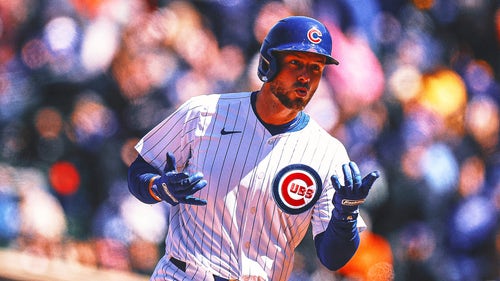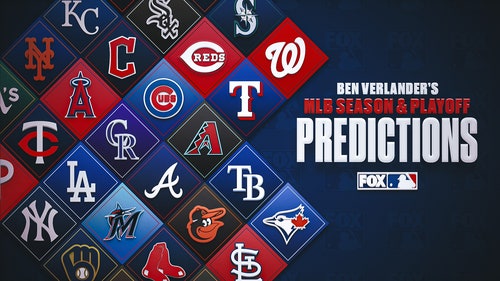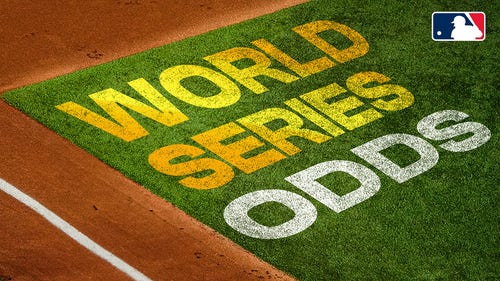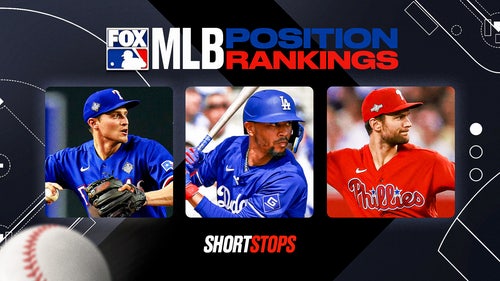
Directors of hitting, pitching becoming more common
MESA, Ariz. (AP) — The Chicago Cubs had data. Lots of data. On velocity, pitch shaping and mechanics. Swing path, bat speed and launch trajectory. Numbers on numbers on numbers.
They also had a problem. The pipeline from research and development to their players and coaches wasn't working as well as they wanted.
Looking to make life easier on Kris Bryant, Jon Lester and everyone else, the Cubs' solution included two of the fastest growing positions in the next wave of baseball's analytics age. They added directors of pitching and hitting to their revamped front office.
“I think you just have to take a step back and say, ‘Hey, do our teachers, do our coaches, do we have the right infrastructure for them to be able to actually digest this information and ultimately have it land with the players?'" said Matt Dorey, the senior director of player development for the Cubs. “Because if it doesn’t land with them, then it's irrelevant.”
The twin directors or similarly styled positions are becoming more common as teams try to make the most of their significant investment in the science of the game.
The Cubs gave Justin Stone the hitting job and selected Craig Breslow — a Yale graduate who majored in molecular biophysics and biochemistry — for the pitching role after they missed the playoffs last season for the first time since 2014. The Yankees, Red Sox, Orioles, Tigers, Reds and Giants also added the positions recently.
“I think too often there's a lot of shared leadership positions and a lot of quality ideas being passed around, but no one to bang the hammer and say we’re going in this direction,” said Sam Briend, who was hired as the Yankees' director of pitching last June.
"The director of pitching role provides clarity and direction from one voice on which way the organization is going to move and what the framework for that movement looks like."
Brian Bannister, the director of pitching for the Giants, turned to another sport to describe his job.
“If I could give a parallel comparison, it would be the pitching coach is like the caddie on the PGA Tour whereas the director of pitching or the director of hitting is almost the guy who's on the driving range tweaking your clubs for that course,” said Bannister, a former big league pitcher.
“I think there's more nuance to the role. I think the pitching coach is there with you in the trenches throughout the whole season. I think the director of pitching is straddling both the major league team and the minor league system and looking at ways for everyone to get better, monitoring everything they're doing and looking for ways to add value in multiple ways.”
Stone had served as a hitting consultant for the Cubs since 2018. He has a master's degree in human performance from Indiana State, specializing in kinesiology, physiology and biomechanics. Breslow was a major league reliever for 12 years before he joined the Cubs' front office in January 2019.
Their new jobs were born out of an examination of the team's player development infrastructure as last season ticked away.
“There just wasn't enough support for how much information was available to us,” Dorey said, “and so we needed to create a different structure that would allow us to be able to process, filter and deliver all this new information that we had at our disposal to our players.”
It's a much bigger world than ever before. Sure, the major league staff still has bench, pitching, hitting, third and first base coaches. But the players also have access to mental skills and performance coaches, to go along with other specialized personnel.
The additional support helps free coaches to do what they do best, Dorey said. The directors also help ensure players get more focused information and consistent instruction rather than a possibly overwhelming stream of numbers and scattershot coaching.
When it comes to overseeing pitching or hitting for a major league organization, which include multiple locations and hundreds of players, coaches and scouts, communication is king. And teams are using technology to help make sure everyone is on the same page.
“Any time we talk to a player at any level of the organization, it gets noted and then immediately everybody in the organization gets that update,” Bannister said. “It doesn't matter if you're talking to a kid down in the (Dominican Republic) or it's at a minor league affiliate or it's up here in a major league bullpen session or just during catch play, right away you jot it down in your phone and immediately the whole front office, every coach at every level gets notified that this was said.”
The communication travels both ways.
Kyle Boddy, the director of pitching initiatives for Cincinnati, has been at the forefront of a pitching revolution, but he also believes coaches with old-school backgrounds are critical to player development. He refers to Class A Daytona pitching coach Tom Brown — a 70-year-old former big leaguer with nearly 50 years in pro ball — as a “walking Rapsodo” — referring to the popular video system for pitching analysis.
Brown approached Boddy this spring and suggested Daytona scrap the practice of having players chart pitches for their teammates. Boddy initially balked, worried that players already weren’t paying enough attention.
“He’s like, ‘Oh, I agree, but they’re just looking on their phones, they’re not charting. The chart sucks, and we can just use TrackMan (a radar system that analyzes pitch movement) instead,’” Boddy recalled. “For me, it’s like, I had never considered four things in that sentence.”













































































































































